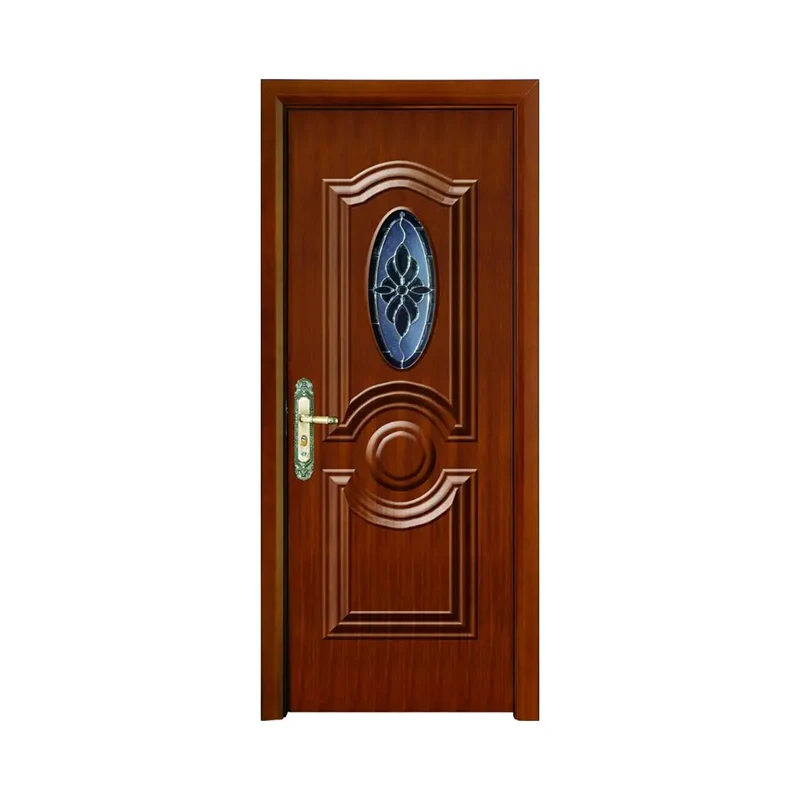Why Is Painting WPC Door Becoming More And More Popular?
2025-08-01
Painting WPC Door has become a popular choice for both residential and commercial projects, combining the durability of composite materials with the versatility of customizable finishes. Whether you are designing a modern home or renovating a commercial space, these doors provide a balance of aesthetics, longevity, and cost-efficiency.
In this article, we will walk you through everything you need to know about Painting WPC Doors — from material specifications and design features to installation advice and frequently asked questions.
What is a Painting WPC Door?
A Painting WPC Door is made from a blend of wood fiber and thermoplastic resins (WPC – Wood Plastic Composite) and is designed with a surface that can be painted in any color or texture. Unlike laminated or PVC-skinned WPC doors, this variant offers more flexibility in design and can be matched precisely to interior or exterior themes.
Why Choose a Painting WPC Door?
Here are some core advantages that make Painting WPC Doors a preferred choice:
-
Paint-Friendly Surface: Easily customizable with a wide range of paints (PU, acrylic, or water-based).
-
High Moisture Resistance: Suitable for bathrooms, kitchens, and other humid environments.
-
Termite and Borer Proof: No need for chemical treatments.
-
Fire Retardant Properties: Enhanced safety for residential and commercial settings.
-
Minimal Maintenance: No warping, cracking, or delamination over time.
-
Eco-Friendly Material: Made from recycled wood and plastic, reducing environmental impact.
Technical Specifications of Painting WPC Door
| Specification | Detail |
|---|---|
| Material Composition | 70% Wood Powder + 30% Plastic Resin |
| Standard Thickness | 28mm / 30mm / 35mm / 40mm |
| Width Range | 600mm – 1000mm |
| Height Range | 2000mm – 2200mm |
| Density | 550–750 kg/m³ |
| Surface Finish | Primer Coated (Ready for Painting) |
| Paint Compatibility | PU, Melamine, Acrylic, Water-Based |
| Water Absorption | <1% (Highly Water Resistant) |
| Fire Resistance | Class B1 (Self-Extinguishing) |
| Termite Resistance | 100% Resistant |
| Recommended Paint | PU Paint or Water-Based Enamel |
| Life Expectancy | 20–25 Years |
Applications of Painting WPC Doors
Painting WPC Doors are suitable for a wide variety of applications, including:
-
Interior Room Doors
-
Bathroom Doors
-
Kitchen Entry Doors
-
Office Partition Doors
-
Hotel Room Doors
-
School and Hospital Rooms
How to Paint a WPC Door Properly
To achieve the best result when finishing your Painting WPC Door, follow this step-by-step guide:
-
Preparation: Sand the door lightly to ensure paint adhesion.
-
Primer Application: Apply a water-based or oil-based primer depending on the paint type.
-
Drying Time: Allow the primer to dry for at least 6–8 hours.
-
First Coat: Apply the first layer of paint with a roller or sprayer.
-
Sanding (Optional): Sand gently between coats for smoother finish.
-
Final Coat: Apply the final paint layer and allow full curing for 24 hours.
Key Benefits of Painting WPC Door
| Feature | Benefit |
|---|---|
| Paintable Surface | Freedom to customize with any shade or pattern |
| No Expansion or Shrinkage | Stable under varying temperatures and humidity levels |
| Eco-Conscious | Recyclable and formaldehyde-free |
| Durable Build | Resistant to physical damage and long-lasting under regular use |
| Low Maintenance | Easy to clean with basic household detergents |
| Indoor & Outdoor Use | Suitable for interiors and semi-covered exteriors |
Comparison: Painting WPC Door vs Traditional Wooden Door
| Feature | Painting WPC Door | Traditional Wooden Door |
|---|---|---|
| Water Resistance | Excellent | Poor |
| Termite Resistance | 100% | Requires Treatment |
| Paint Flexibility | High | Moderate |
| Eco-Friendliness | High (Recycled Content) | Low |
| Maintenance Requirement | Low | High |
| Installation Time | Fast | Moderate |
| Cost-Effectiveness | Moderate | High |
Frequently Asked Questions (FAQ)
What does a Painting WPC Door mean?
A Painting WPC Door refers to a Wood Plastic Composite door with a surface suitable for painting in any color or finish, offering both durability and customization.
Can I use regular wall paint on a Painting WPC Door?
No. It is recommended to use PU-based or water-based enamel paints for optimal adhesion and durability on WPC surfaces.
Are Painting WPC Doors suitable for bathrooms?
Yes. They are highly water-resistant and do not swell or warp, making them ideal for wet areas like bathrooms.
Do these doors crack or bend over time?
No. Painting WPC Doors are designed to withstand thermal expansion and humidity changes, ensuring long-term shape retention.
Can I repaint a Painting WPC Door later?
Yes. You can repaint them easily using a fresh coat of compatible paint after lightly sanding the surface.
Is it necessary to apply primer before painting a WPC door?
Yes. Primer ensures proper adhesion and a smooth, even finish for your topcoat.
How long does the paint last on WPC doors?
With the right application and environmental conditions, the paint can last for up to 8–10 years without noticeable wear.
